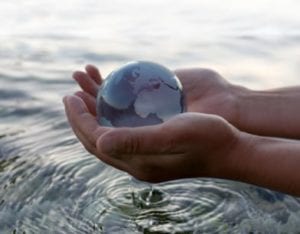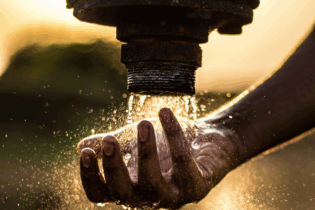 Residents of the eThekwini Municipality are now beginning to feel the effects of thousands of holidaymakers that spent the festive period in KwaZulu-Natal.
Residents of the eThekwini Municipality are now beginning to feel the effects of thousands of holidaymakers that spent the festive period in KwaZulu-Natal.
Water restrictions not met in 2016
In December 2015, the Department of Water and Sanitation placed a 15% restriction on domestic, industrial and commercial consumers within the greater Umgeni River system, as well as a 50% restriction for farming and irrigation. The department indicated that to date, these restrictions have not been achieved. Late last year, the municipality requested the relaxation of the restrictions during the festive season to cater for the increased demand of holidaymakers in the city. However, the demand exceeded the supply during this time, which caused a strain on the water network system. The 15% water restriction was reinstated on 16 January this year, however due to the low supply of water, water from the Mount Moriah Reservoir was used. Mount Moriah supplied 16 reservoirs downstream of it which then resulted in it running dry.How the system works
The municipality said that these reservoirs operated using a step-pumping system. This meant that the reservoirs were on a chain system. One reservoir has to fill up to a certain level before water can be pumped to the next. The municipality said that when this system is affected, so is reticulation of the water. Pinetown South which includes, Tshelimnyama, KwaNdengezi, Dassenhoek, Mpola and Savannah Park are at the end of this system. This means that KwaNdengezi Reservoir will be the last reservoir to recover. “This is just how the system was designed and configured,” the municipality said.It also explained that when the system was interrupted, high level zones or those residing next to the reservoir would be the first to run out of water and those in the low level zone would be the last. However, when water gets restored, low level zones would get water first and high level zones, last.
Why water restrictions are impractical
“The question of rolling out restrictions evenly in the systems is not practical as one system may achieve savings and the other may not, forcing Umgeni Water to reduce the water supply,” the municipality said.DWS could increase restrictions
The municipality said there were indications that the Department of Water and Sanitation was looking into increasing the restrictions from 15%, which was currently not being achieved, to 20% as dam levels remain low and demand has not been reduced by consumers. “This has necessitated the implementation of stage 3 restrictions,” the municipality said. The municipality has urged people to refrain from using sprinklers, hosepipes, filling swimming pools, washing vehicles etc. during the drought. The city said it will deal with illegal connections, high consumption and illegal car washes. “Penalties will be imposed to those who do not adhere to the restriction rules imposed,” the municipality said. (To report faults or water wastage – see below). Below is a table indicating the different stages of water restrictions: To report faults or water wastage, contact:
To report faults or water wastage, contact:
- Customer Care line: 080 13 13 013
- WhatsApp Fault Report line: 073 148 3477
- SMS: 43554
- Email: Eservices@durban.gov.za








